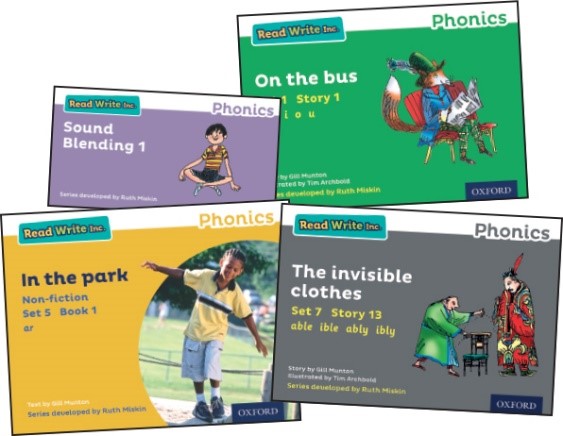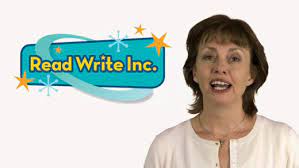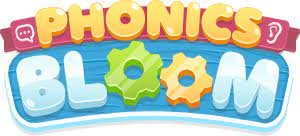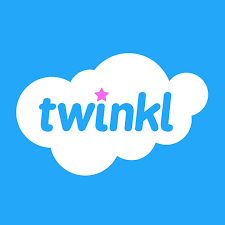Phonics

An example of using dots and dashes to identify the different sounds in a word; dots for sounds made with one letter, dashes for sounds made with multiple letters. Circles are used when sounds don't follow the usual pattern.
Rationale
Reading is the absolute bedrock of our curriculum and unlocks the learning for all pupils. Without the ability to read, children aren’t equipped with the skills necessary to absorb and process new knowledge. We make it our priority for every child to learn to read by the end of their time with us, to ensure they are prepared for not just continuing education, but life.
Phonics and early reading skills underpin reading, and as such play a key role in a child’s learning. High quality phonics teaching and learning is essential to ensure that children secure a solid foundation upon which to base further progress and learning in all areas of the curriculum and life.
Intent
We recognise that every child begins their reading journey with us at different starting points and we make it our priority to ensure that children make accelerated progress in reading, equipping them for learning with us by ensuring that:
- every child masters the skills needed to decode words, read (and spell) independently as quickly as possible
- children ‘keep up’ rather than ‘catch up’ so that children do not fall behind with reading progress at Ravenscote
- high quality phonics and early reading teaching and learning is provided consistently across the school
- specialist teaching lessons provide additional support for children needing help to develop learning skills and overcome barriers to learning
At Ravenscote, we have embedded the Read, Write, Inc. (RWI) as a structure to ensure that every child learns to read as quickly as possible. RWI is a government validated systematic synthetic phonics (SSP) programme which exceeds National Curriculum standards. This provides a well-structured path from grapheme-phoneme correspondence to fluent reading which enables children to access, extend and consolidate their learning independently and read for pleasure, a pastime which not only builds literacy and vocabulary skills but has positive benefits for well-being.
The progression of phonics is organised sequentially so that graphemes, skills, and knowledge build upon each other and increase in difficulty. This order of introduction of the phonemes is through the Read, Write Inc programme.
RWI was originally chosen because it offers excellent opportunities for quality practise and over learning. This optimal approach also works well with the multisensory approach to learning reflected in the specialist teaching programme ‘Alpha to Omega’. Alpha to Omega is widely accepted as a successful approach to teaching children with dyslexia and other learning difficulties.
Specialist teaching of phonics is important so that children can master reading. Teaching children using a multi-sensory approach which is will maximise learning and promote successful, engaged, and confident learners in all areas of the connected curriculum. Gaps in phonological awareness and the pre-reading skills required to provide a firm foundation for grapheme-phoneme security and early reading can be identified and filled, and phonic expertise can be shared amongst the whole school staff through training.
Working alongside our Ruth Miskin consultant, we have tailored this systematic and structured approach to teaching literacy skills to our junior school setting, ensuring it is engaging, age-appropriate and enables our children to catch up quickly.
Implementation
When they first start at Ravenscote, our children’s reading skills are assessed and any gaps identified quickly. If they have gaps in their knowledge of sounds and struggle with word reading, they will start on our Read, Write, Inc. Phonics programme.
Read, Write, Inc. Phonics – These explicit 30-minute phonics sessions in Year 3 and 4 take place alongside our reading lessons and are designed to build children’s awareness of sounds (phonemes) and the letters that make them (graphemes).
In small groups based on their reading ability, children will spend time learning a new sound (or revisiting one they have already learnt) and will then apply this sound to a range of real words (Green Words) and alien (nonsense) words, until they have developed automaticity: they can do it automatically.
Next, they will take the sounds they have already learned and apply them to story books. These short story books are matched to sounds they have already learned – they will not contain new sounds the children are not familiar with. Over a period of 3 sessions, the children will read the book several times. Each time, they will build their confidence, fluency and understanding.
The expectation is that the opportunities for reviewing and securing phonic knowledge will secure fast progress and as many children as possible will have finished the entire programme by the end of Year 3. At the least, we expect all children in Year 3 to be familiar with the Set 1 sounds by the end of Autumn 2.
Book bag books – To embed the reading skills they are learning in school, children will be bringing home book bag books. These will match the colour level of the Story books the children are reading in the phonics sessions in school.
Read, Write, Inc. Fast Track – These additional sessions complement the learning in the Read, Write, Inc. Phonics sessions, providing pupils with additional opportunities to build their confidence and fluency with the sounds they are learning.
Read, Write, Inc. Fresh Start – Tailored specifically for children in Year 5 and 6, these sessions take the form of 15 to 20-minute sessions in a one-to-one or small group environment, building on the pupils’ understanding of phonics and applying it to lengthier, age-appropriate texts.
Whole school approach
The skills the children learn in their Read, Write, Inc. Phonics and Fresh Start sessions will remain with them, even when they have finished the programme.
All year groups, from Years 3 to 6, practice Speed Sounds at the start of their reading sessions to ensure they remain fluent in their knowledge and understanding of how sounds are made and spelt.
As part of our feedback to children, we regularly use the dots and dashes language of Read, Write, Inc. to help children understand the errors that they might have made in their writing.
In these words, single-letter sounds are represented by dots and multi-letter sounds are represented by dashes.
In every classroom and in every child’s handbook, we have a copy of the Read, Write, Inc. sound chart. This helps children recall the different letter combinations which can make each sound and helps them when they read or attempt to spell unfamiliar words.
Impact
The RWI schemes have been going for roughly a term but already we are seeing children successfully moving off the scheme and onto the banded reading books. This is very encouraging.
- In Year 3, the children initially started on a four-week programme of Speed Sound Sessions have made great progress, with 8 children moved off the scheme already in just 4 weeks!
- Last year, 36 of our current Year 4s were on the RWI programme. This year, there are only 12!
- We had 42 children from our current Year 5 on the RWI programme last year. This year, we have already transitioned 12 off!
- 18 children started the RWI Fresh Start in Year 5 last year with 12 of them completing the modules and moving off the programme by Autumn 1 this year!
The annual reading age assessments taken for the specialist teaching at the beginning and end of Year 3 show that the children attending these groups made, on average, more than 22 months progress over the 9 months.
This is all the more pleasing when taking into account that these are the children who find learning the most challenging.
Ongoing formative teacher assessments of learning in lessons provide evidence that children are learning and applying learning from previous sessions to new learning, and the children’s enthusiasm for the lessons and learning is also shining through.
Children tell us that they enjoy their phonics lessons because they ‘learn about the sounds’ and ‘remember the sounds’.
“We look for ‘Best Friend’ sounds and then use ‘Sound Talk’ to read a word we don’t recognise.”
“Phonics is the sounds that makes words. We use our phonics to help us read or spell words that we don’t know.”
“If I don’t know how to spell a word. I use my ‘Sound Fingers’ to break it down.”
Useful resources for parents/carers:
See below for our Speed sounds chart. This can also be found in your child’s Ravenscote handbook.
Ruth Miskin introduction video to Read, Write, Inc Phonics.
Interactive tool to practice Set 1, Set 2, Set 3 and Additional Speed sounds at home with your child
The following useful websites may aid with your child's learning.







